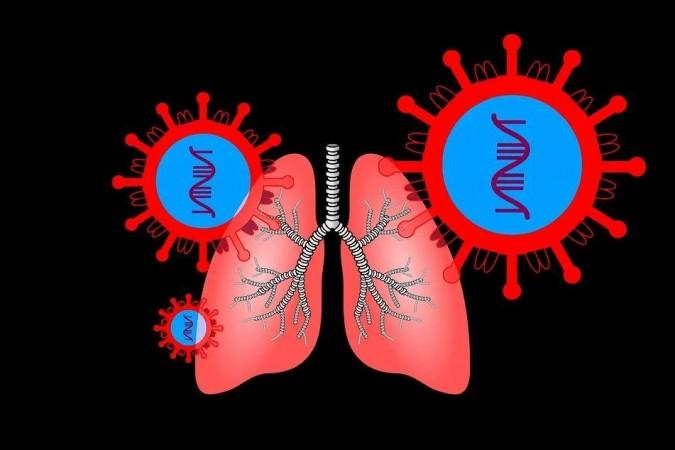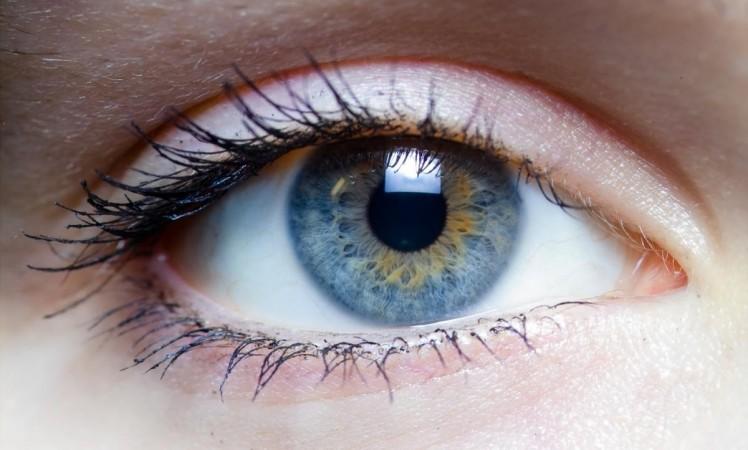If beating COVID-19 was not enough, the tryst with the SARS-CoV-2 coronavirus has left several survivors with long-term symptoms called 'long COVID'. From headaches to brain fog to loss of olfactory senses, the list is long. Now, scientists suggest that loss of nerve fibres and the rise in the number of key immune cells in the eye may serve as an indicator of long COVID.
According to the study, nerve fibre loss and an increase in dendritic cell numbers in the cornea of the eye was prevalent among those who experienced long COVID; particularly those with neurological symptoms. The research was published in the British Journal of Ophthalmology.
"To the best of our knowledge, this is the first study reporting corneal nerve loss and an increase in [dendritic cell] density in patients who have recovered from COVID-19, especially in subjects with persisting symptoms consistent with long COVID," wrote the authors.
Role of Nerve and Immune Cells

Long COVID—the persistence of symptoms and health problems for four or more weeks after being infected with SARS-CoV-2—has been found to leave survivors battling several other ailments. Some of them include fatigue, headache, changes/loss in smell or taste, difficulty in breathing and shortness of breath, and brain fog (difficulty in concentrating or thinking), among others.
It has been suggested that neuropathy, the dysfunction or damage of one or more nerves, may be the underlying cause of long COVID. In particular, the damage to small nerve fibres has been contemplated about. Therefore, the researchers wanted to ascertain if there was small nerve damage in the cornea of the eyes among long COVID sufferers. The cornea is the eye's clear and protective outer layer.
Along with a questionnaire, the team used a non-invasive and high-resolution imaging technique known as corneal confocal microscopy (CCM) to look for nerve damage in the cornea. CCM is used in identifying nerve damage and inflammation associated with multiple sclerosis, diabetic neuropathy and fibromyalgia. The scientists also observed the density of dendritic cells, which are immune cells responsible for the triggering of adaptive immune responses.
Visible Symptoms of 'Long COVID'

Forty individuals, who had recovered from COVID-19 between 1-6 months, filled out a questionnaire by the National Institute of Health and Clinical Excellence (NICE). It consisted of 28 questions and was aimed at helping them know if they suffered from long COVID. Nine areas were addressed in the questionnaire: generalized, cardiovascular, dermatological, gastrointestinal, musculoskeletal, neurological, psychological/psychiatric, respiratory, and ear, nose and throat symptoms. The total score ranged from 0 to 28.
Among the 40 participants, 22 (55 percent) showed no clinical symptoms of pneumonia. On the other hand, 11 (28 percent) had clinical signs of pneumonia. Four (10 percent) were hospitalized due to pneumonia and required oxygen assistance, and three (8 percent) had been placed in intensive care due to pneumonia.
Nerve Damage In Cornea
Importantly, it was found that neurological symptoms were present in 22 out of 40 participants (55 per cent) at four weeks, and 13 out of 29 patients (45 per cent) at 12 weeks. Following this, the team scanned the corneas of the volunteers using CCM. They looked for small nerve fibre damage and the density of dendritic cells. Next, these scans were compared with corneal scans from 30 healthy individuals who had not been infected with COVID-19.

Through the comparison of the corneal scans, it was found that the level of corneal nerve fibre damage and loss, and numbers of dendritic cells was greater in individuals—having neurological symptoms at 4 weeks—who had recovered from more severe forms of the disease. Among those who did not have neurological symptoms, the number of corneal nerve fibres was comparable to individuals who had not contracted COVID-19. However, the numbers of dendritic cells were higher in their case.
Potential for Evaluating 'Long COVID'
Therefore, the responses of the questionnaire suggest that the long COVID symptoms are strongly correlated with corneal nerve fibre loss. "We show that patients with long COVID have evidence of small nerve fibre damage which relates to the severity of long COVID and neuropathic as well as musculoskeletal symptoms," wrote the authors.

The team, however, admit that the study is bound by certain limitations. To begin with, it was an observational study. A cause was not established. Also, with only 40 participants, the size of the sample was relatively small. Additionally, long-term monitoring was absent, and there was a dependence on questionnaires to confirm how severe the neurological symptoms were instead of more objective methods.
Despite its limitations, the research is indicative of the fact that eye health is closely linked to overall health. This is why techniques such as CCM may hold great value as crucial diagnostic measures in the future. "Corneal confocal microscopy may have clinical utility as a rapid objective ophthalmic test to evaluate patients with long COVID," the study concluded.
















